What is considered a dangerous body temperature. High Temperature Causes and Treatments: Understanding Fever
What is considered a dangerous body temperature? How high is too high for a fever? Discover the causes, symptoms, and treatment options for high temperatures and fevers.
Understanding Fever: What is a High Temperature?
A fever is a body temperature that is higher than what is considered normal. It is also known as a high temperature, hyperthermia, or pyrexia, and it is usually a sign that your body is working to keep you healthy from an infection. Normal body temperatures can vary from person to person, but they typically fall within the range of 97 to 99 degrees Fahrenheit. A temperature of 100.4 degrees Fahrenheit or higher is considered a fever.
Causes of Fever
Fevers are often a sign of some sort of illness or infection. The most common causes of fever are infections such as colds and stomach bugs (gastroenteritis). Other causes include:
- Infections of the ear, lung, skin, throat, bladder, or kidneys
- Heat exhaustion
- COVID-19
- Sunburn
- Conditions that cause inflammation, such as rheumatoid arthritis
- Side effects of medications
- Vaccines and immunizations
- Blood clots
- Autoimmune conditions such as lupus and inflammatory bowel disease (IBS)
- Cancer
- Hormone disorders such as hyperthyroidism
- Illegal drugs such as amphetamines and cocaine
- Teething in babies (can cause a mild, low-grade fever, not over 101 degrees)
Fever Symptoms
When you have a fever, you may also notice other symptoms such as:
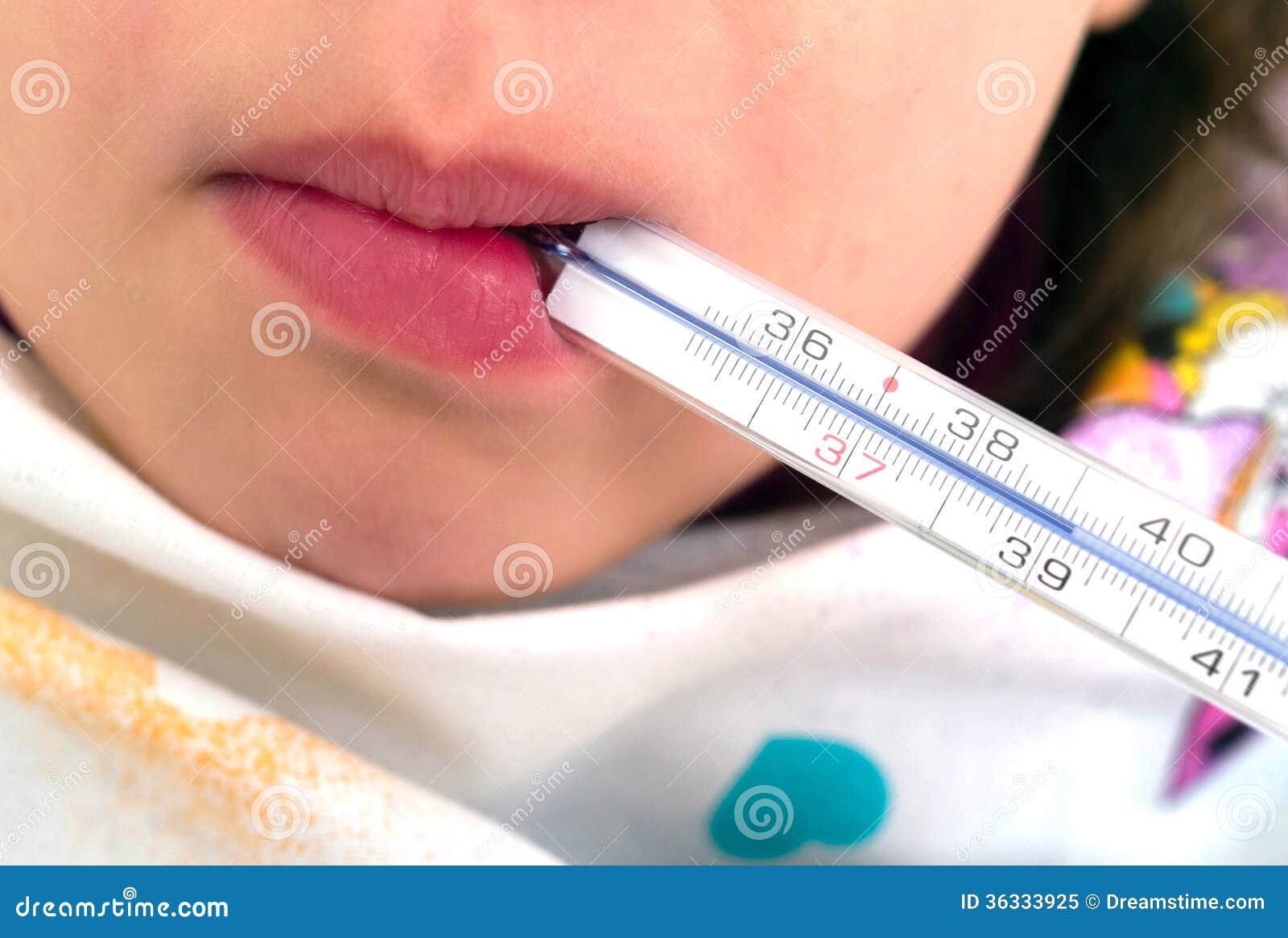
- Chills or shivering
- Sweating
- Headache
- Feeling weak
- Being irritable
- Loss of appetite
- Dehydration
Fever Diagnosis
Although a fever is easy to measure with a thermometer, finding the underlying cause can be more challenging. Your doctor will likely conduct a physical exam, ask about your symptoms and any recent illnesses or travel, and may order additional tests depending on the suspected cause.
When to Seek Medical Attention
You should check in with your doctor if:
- An adult’s temperature is 103 degrees Fahrenheit or higher
- A very young infant (under 3 months) has a rectal temperature of 100.4 degrees Fahrenheit or higher (call your doctor or go to an emergency room immediately)
- A 3-6-month-old has a higher than normal rectal temperature and is also irritable or sleepy (call your doctor right away)
- A 3-6-month-old has a 102 degrees Fahrenheit or higher rectal temperature
- A 6-24-month-old has a fever higher than 102 degrees Fahrenheit for more than a day or with other symptoms such as a cough or diarrhea
- A child older than 2 has a fever that comes with a rash, real discomfort, irritability, listlessness, headache, stiff neck, or repeated diarrhea or vomiting
- An infant or child has a seizure
- Any temperature over 104 degrees Fahrenheit in a child, which could cause a seizure
- Any fever that starts after someone has been in hot temperatures, which could be a sign of heat stroke
- The fever doesn’t go down after taking over-the-counter medications such as ibuprofen in the appropriate doses
- You’ve been in contact with someone who has COVID-19
Fever Treatments
Treatments for fever vary depending on the underlying cause. For example, antibiotics would be used for a bacterial infection such as strep throat. The most common treatments for fever include over-the-counter drugs such as acetaminophen and nonsteroidal anti-inflammatory drugs (NSAIDs) like ibuprofen and naproxen. It’s important to note that children and teens should not take aspirin due to the risk of Reye’s syndrome.

Additional Tips for Managing Fever
To help stay comfortable while dealing with a fever, you can:
- Drink a lot of clear liquids such as water, broth, and juices or a rehydration drink
- Take a lukewarm bath
- Rest
- Keep yourself cool with lightweight clothing and bed coverings
Remember, while fevers can be unpleasant, they are often a natural bodily defense against infection. However, it’s important to monitor your temperature and seek medical attention if it becomes dangerously high or if you experience other concerning symptoms. By understanding the causes, symptoms, and appropriate treatments for fever, you can better manage your health and well-being.
High Temperature Causes and Treatments
Written by Rick Ansorge
- What Is a Fever?
- Fever Symptoms
- Fever Causes
- Fever Diagnosis
- Fever Treatments
A fever is a body temperature that’s higher than is considered normal. It’s also called a high temperature, hyperthermia, or pyrexia, and it’s usually a sign that your body is working to keep you healthy from an infection. Normal body temperatures are different for everyone, but they lie within the range of 97 to 99. A temperature of 100.4 or higher is considered a fever.
A part of your brain called the hypothalamus controls your body temperature. In response to an infection, illness, or some other cause, the hypothalamus may reset the body to a higher temperature. So when a fever comes on, it’s a sign that something is going on in your body.
Fevers themselves generally aren’t dangerous, but you should check in with your doctor if:
- An adult’s temperature is 103 or higher
- A very young infant (under 3 months) has a rectal temperature 100.
 4 or higher (call your doctor or go to an emergency room immediately)
4 or higher (call your doctor or go to an emergency room immediately) - A 3-6-month-old has a higher than normal rectal temperature and is also irritable or sleepy (call your doctor right away)
- A 3-6-month-old has a 102 or higher rectal temperature
- A 6-24-month-old has a fever higher than 102 for more than a day or with other symptoms such as a cough or diarrhea
- A child older than 2 has a fever that comes with rash, real discomfort, irritability, listlessness, headache, stiff neck, or repeated diarrhea or vomiting
- An infant or child has a seizure
- Any temperature over 104 in a child, which could cause a seizure
- Any fever that starts after someone has been in hot temperatures, which could be a sign of heat stroke
- The fever doesn’t go down after taking over-the-counter medications such as ibuprofen in the appropriate doses
- You’ve been in contact with someone who has COVID-19
Fevers are signs of some sort of illness or infection.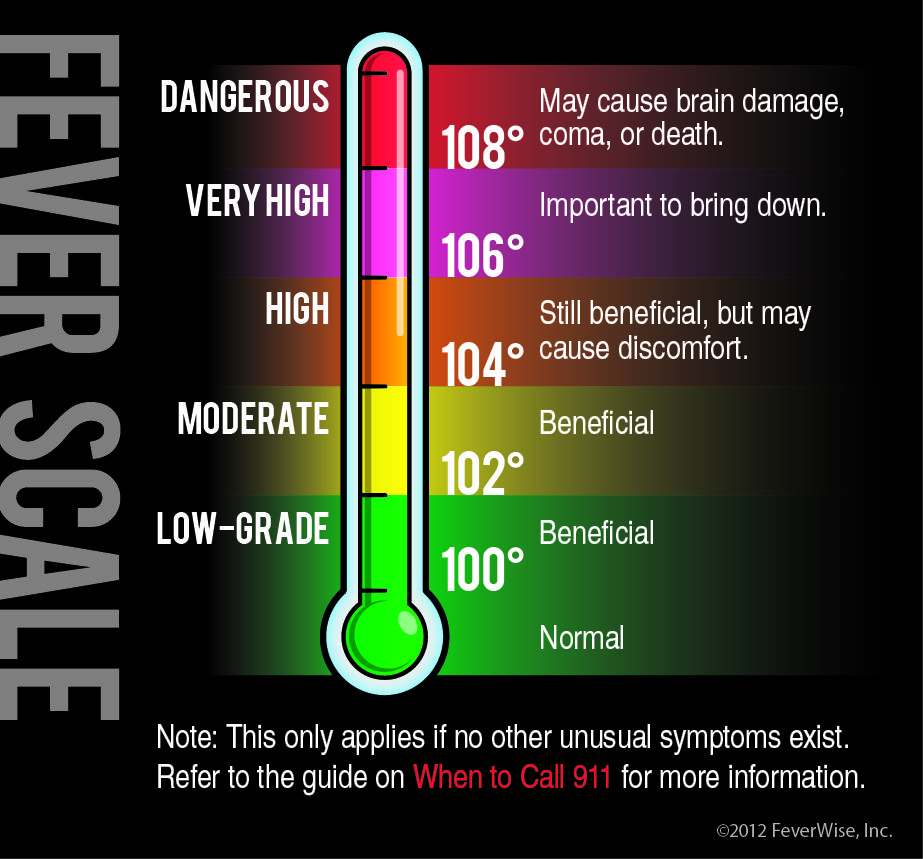 When you have, you may also notice these symptoms:
When you have, you may also notice these symptoms:
- Chills or shivering
- Sweating
- Headache
- Feeling weak
- Being irritable
- Losing your appetite
- Being dehydrated
A fever can be a sign of several health conditions, which may or may not need medical treatment.
The most common causes of fever are infections such as colds and stomach bugs (gastroenteritis). Other causes include:
- Infections of the ear, lung, skin, throat, bladder, or kidney
- Heat exhaustion
- COVID-19
- Sunburn
- Conditions that cause inflammation, such as rheumatoid arthritis
- Side effects of medications
- Vaccines and immunizations
- Blood clots
- Autoimmune conditions such as lupus and inflammatory bowel disease (IBS)
- Cancer
- Hormone disorders such as hyperthyroidism
- Illegal drugs such as amphetamines and cocaine
- Teething in babies can cause a mild, low-grade fever (not over 101 degrees)
Although a fever is easy to measure with a thermometer, finding its cause can be hard. Besides a physical exam, your doctor will ask about symptoms and conditions, medications, and if you’ve recently traveled to areas with infections or have other infection risks. A malaria infection, for example, may cause a fever that typically comes back. Some areas of the U.S. are hot spots for infections such as Lyme disease and Rocky Mountain spotted fever.
Besides a physical exam, your doctor will ask about symptoms and conditions, medications, and if you’ve recently traveled to areas with infections or have other infection risks. A malaria infection, for example, may cause a fever that typically comes back. Some areas of the U.S. are hot spots for infections such as Lyme disease and Rocky Mountain spotted fever.
Your doctor may ask if you have been around someone with COVID-19 or have any other symptoms of COVID-19.
Sometimes, you may have a “fever of unknown origin.” In such cases, the cause could be an unusual or not obvious condition such as a chronic infection, a connective tissue disorder, cancer, or another problem.
Fever is usually associated with physical discomfort, and most people feel better when a fever is treated. But depending on your age, physical condition, and the underlying cause of your fever, you may or may not require medical treatment for the fever alone. Many experts believe that fever is a natural bodily defense against infection. There are also many non-infectious causes of fever.
There are also many non-infectious causes of fever.
Treatments vary depending on the cause of the fever. For example, antibiotics would be used for a bacterial infection such as strep throat.
The most common treatments for fever include over-the-counter drugs such as acetaminophen and nonsteroidal anti-inflammatory drugs such as ibuprofen and naproxen. Children and teens should not take aspirin because it’s linked to a condition called Reye’s syndrome.
Stay comfortable by:
- Drinking a lot of clear liquids such as water, broth, and juices or a rehydration drink.
- Taking a lukewarm bath.
- Resting.
- Keeping yourself cool with lightweight clothing and bed coverings.
Top Picks
High temperature (fever) in adults
What is a high temperature?
Normal body temperature is different for everyone and changes during the day.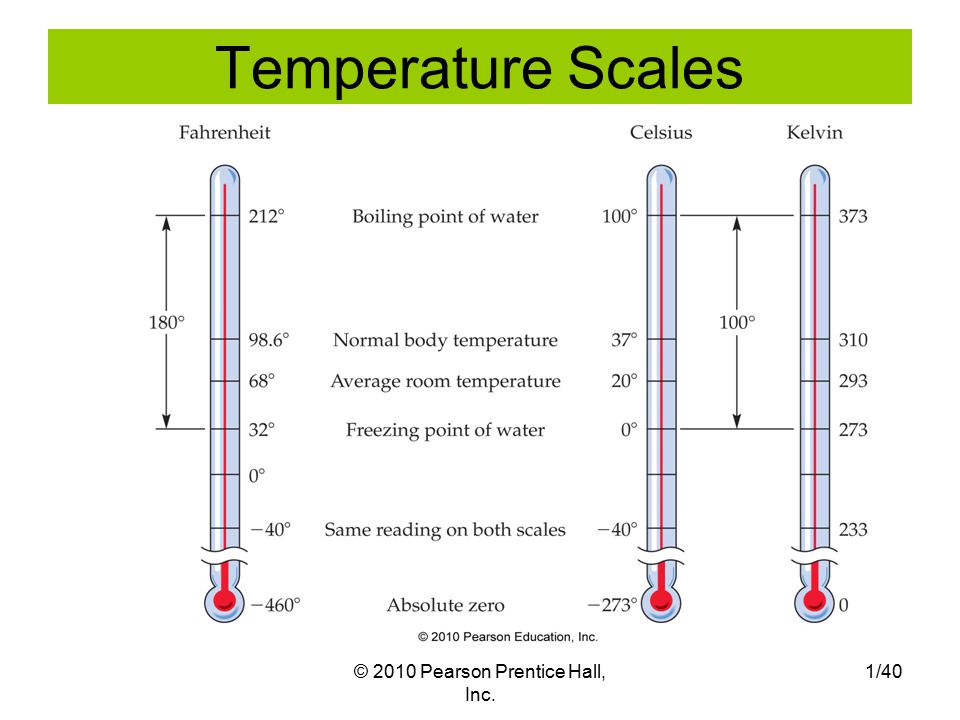
A high temperature is usually considered to be 38C or above. This is sometimes called a fever.
Check if you have a high temperature
You may have a high temperature if:
- your chest or back feel hotter than usual
- you have other symptoms, such as shivering (chills), sweating or warm, red skin (this may be harder to see on black or brown skin)
- a thermometer says your temperature is 38C or above
Important
If you feel hot or shivery, you may have a high temperature even if a thermometer says your temperature is below 38C.
Do I need to take my temperature?
You do not need to take your temperature using a thermometer, but you can if you have one.
Make sure you use it correctly to help get an accurate result. See how to take a temperature.
Treating a high temperature
There are some things you can do to help treat a high temperature.
Do
get lots of rest
drink plenty of fluids (water is best) to avoid dehydration – drink enough so your pee is light yellow and clear
take paracetamol or ibuprofen if you feel uncomfortable
Information:
Try to stay at home and avoid contact with other people until you do not have a high temperature.
Urgent advice: Ask for an urgent GP appointment or get help from NHS 111 if you have:
- a high temperature and you’ve been treating it at home but it’s not getting better or is getting worse
You can call 111 or get help from 111 online.
Causes of a high temperature
Many things can cause a high temperature. It’s not usually a sign of anything serious.
It’s often just caused by your body fighting an infection, such as a cold or flu.
Sometimes it could be a sign of something more serious if your temperature is very high or will not come down.
Information:
Advice for children
This page is for adults. For advice about children, see high temperature (fever) in children.
Page last reviewed: 24 May 2023
Next review due: 24 May 2026
What body temperature is considered normal?
Body temperature is individual for each person and depends on different characteristics of the body, however, in some cases, a low or high temperature may indicate serious problems. This was told to Izvestiya by the head of the polyclinic department of the MEDSI Clinical Hospital No. 1 in Otradnoye, a therapist-oncologist Natalia Tolstykh.
This was told to Izvestiya by the head of the polyclinic department of the MEDSI Clinical Hospital No. 1 in Otradnoye, a therapist-oncologist Natalia Tolstykh.
According to the specialist, body temperature can be influenced by such indicators as metabolic characteristics, the work of the endocrine glands or the autonomic nervous system. At the same time, for each person during the day, the temperature fluctuates within small limits, remaining in the range from 35.5 to 37.2 degrees for a healthy person.
The temperature may also vary depending on the activity (with high activity, the temperature may rise slightly) and the time of day. Normal daily temperature fluctuations are 0.5–0.7 degrees. When a person falls asleep, all processes in the body slow down and the body temperature drops slightly, getting closer to 35-36 degrees, Tolstykh explained.
“It is important to understand that lower (compared to the population norm) body temperature, that is, less than 35.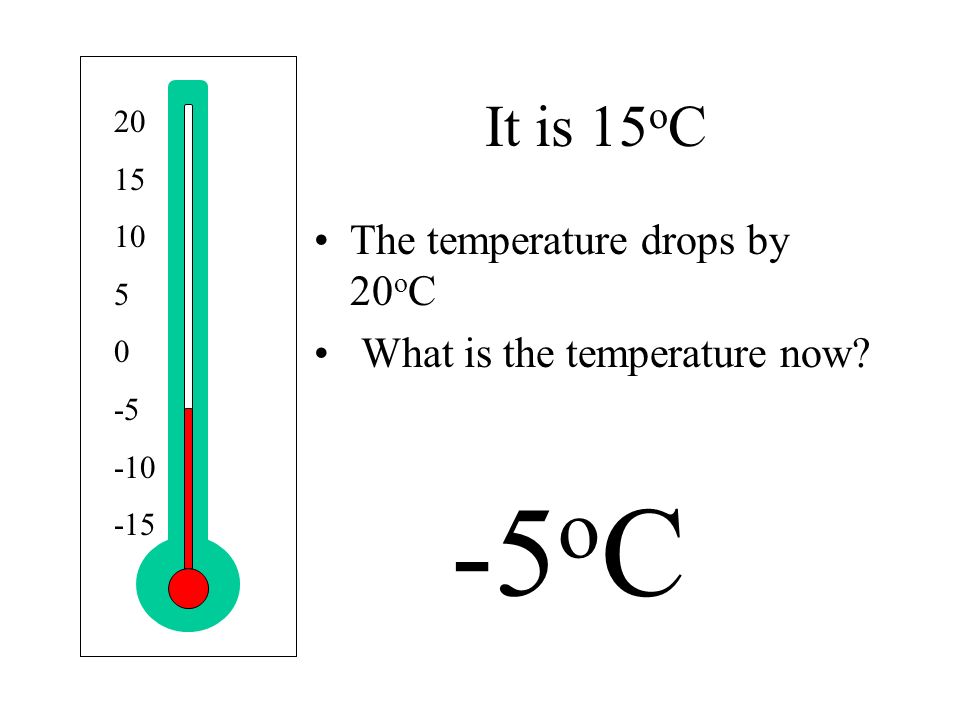 5 degrees, may be an individual feature of some people, and does not always indicate the presence of diseases. Low body temperature, or the so-called hypothermia (below 35.2 degrees), can be caused by hypothermia, intoxication, problems with the endocrine system (reduced thyroid function – hypothyroidism, or adrenal insufficiency) “- said the oncologist.
5 degrees, may be an individual feature of some people, and does not always indicate the presence of diseases. Low body temperature, or the so-called hypothermia (below 35.2 degrees), can be caused by hypothermia, intoxication, problems with the endocrine system (reduced thyroid function – hypothyroidism, or adrenal insufficiency) “- said the oncologist.
Hypothermia also occurs in severe infections among the elderly, with hypothermia. Often the temperature can be lowered within a few days after a person has had an infection – the so-called asthenic trace.
“This is a signal that the body has coped with the infection, but is still weak and there is a risk of getting sick again,” the expert explained.
In addition, exposure to heat and cold, physical activity, consumption of spicy foods and/or heavy meals, and pregnancy (up to 37.4 degrees are common) can cause slight changes in temperature.
“37.1–38 degrees is the so-called subfebrile temperature. It may persist for up to two weeks after infection with fever. In the absence of other symptoms, this condition does not require additional examination and treatment. Quite often, colds occur in an erased form, and the detection of temperature is an accidental finding, ”added Tolstykh.
In the absence of other symptoms, this condition does not require additional examination and treatment. Quite often, colds occur in an erased form, and the detection of temperature is an accidental finding, ”added Tolstykh.
Speaking of elevated temperature, she emphasized that such a reaction of the body is its response to the introduction of a pathogenic microorganism. With good tolerance, fever up to 38.6 is better not to bring down the intake of antipyretics, since bacteria and viruses reproduce worse at elevated ambient temperatures, the doctor recommended, specifying that this concerns a healthy young body without concomitant pathology.
However, there are exceptions to this general rule. Body temperature should be treated more carefully in some cases.
“Firstly, in the pathology of the cardiovascular system (in particular, coronary heart disease, heart failure), an increase in temperature causes a high load on the heart, an increase in heart rate, therefore, in such cases, the temperature drop threshold can be reduced to 38 degrees. Secondly, with a non-infectious cause of fever (paraneoplastic, that is, tumor diseases, fever, fever in rheumatoid diseases), it makes no sense to withstand high temperatures, ”the specialist said.
Secondly, with a non-infectious cause of fever (paraneoplastic, that is, tumor diseases, fever, fever in rheumatoid diseases), it makes no sense to withstand high temperatures, ”the specialist said.
According to Tolstoy, children usually tolerate temperatures up to 39 degrees, but the doctor noted that there are people who are sensitive to febrile convulsions, that is, their development when the body temperature rises.
Usually we are talking about a fever above 40 degrees, but convulsions individually can develop at a temperature of 39 degrees or even lower. In such cases, it is important to remember this feature of the child and prevent such an increase in temperature.
“At a temperature of 41 degrees and above, the protein begins to denature everywhere, in fact, the body is boiling – such a temperature is life-threatening,” the expert draws attention. In this case, the temperature must be lowered – antipyretics, cooling with a cold blanket and rubbing will help.
The temperature has risen. What you need to know
37.0 — is this already a disease? When should you take an antipyretic? Can heat kill? Why is it advised to eat less at a temperature? We analyze popular questions
Usually we consider a fever a sign of SARS, influenza or other infectious disease. However, it can also jump after vaccination, although there is no infection in the body. Deviations from the temperature norm have dozens of reasons. To understand why this happens, it is worth learning more about the thermoregulation of our body.
In 1851, the German physician and scientist Karl Wunderlich summarized the results of a million temperature measurements in the armpits of patients and for the first time established the normal limit of 37°C, or 98.6°F. He also put into practice regular measurements of the temperature of patients and argued that fever (fever) is not the disease itself, but its symptom.
However, later studies revised Wunderlich’s estimate and reduced the rate to 36. 6°C. This was due not so much to the scientist’s mistakes as to the improvement in the quality of life. Wunderlich lived in an era when the average life expectancy was 38 years, and many people suffered from chronic infections such as tuberculosis, syphilis and periodontitis. A high level of systemic inflammation in the body could lead to such a norm.
6°C. This was due not so much to the scientist’s mistakes as to the improvement in the quality of life. Wunderlich lived in an era when the average life expectancy was 38 years, and many people suffered from chronic infections such as tuberculosis, syphilis and periodontitis. A high level of systemic inflammation in the body could lead to such a norm.
At the same time, the temperature norm also depends on the place of measurement: in the armpit – it is 36.6 ° C, in the anus and vagina – 37.5 ° C; in the mouth – 37.0 ° C. By the way, the axillary method is considered the least accurate, but it has entered hospital practice as the simplest and most hygienic. For example, in the United States at home, a thermometer is placed in the mouth. But not any thermometer is suitable for this, you need a special one.
No. The temperature depends on daily biological cycles (at night and in the morning it is lower than during the day and in the evening), physical and mental activity, emotional state (fear, stress), and ambient temperature. Also, temperature regulation is disturbed by drug and alcohol intoxication. A constant temperature of 37.2 ° C can be in women during the period of ovulation and in pregnant women. Therefore, it is important to measure the temperature, if possible, in a calm, unexcited state.
Also, temperature regulation is disturbed by drug and alcohol intoxication. A constant temperature of 37.2 ° C can be in women during the period of ovulation and in pregnant women. Therefore, it is important to measure the temperature, if possible, in a calm, unexcited state.
Without illness or other physiological disturbances, the temperature will not exceed 37.2°C. But then begins what experts call subfebrile (from the Latin febris – fever) temperature – from 37.2 to 37.8 or even 38.0 ° C. Usually she speaks of a sluggish inflammatory process, that the body is fighting infections, and other disorders.
Subfebrile temperature can be distinguished by other signs of the disease – weakness, headache, sweating and body aches.
Yes, but not only. Subfebrile temperature can be observed in hundreds of different conditions. These can be various kinds of infections (for example, this is one of the symptoms of early tuberculosis), poisoning, dental diseases, allergic reactions, latent autoimmune diseases and chronic pathologies.
The temperature within these limits can also increase after receiving a dose of ionizing radiation of 2 to 4 Gy, against the background of hormonal changes in women during menopause. With prolonged or very acute stress, the body can also respond with an increase in temperature – this condition is called psychogenic fever, or thermoneurosis.
It is worth noting that such a temperature in itself does not harm the body. It is simply a tool the body uses to deal with real or imagined threats. For example, an increase in temperature after vaccination is considered a variant of the norm: the body thinks that it is being attacked, and just in case, it “alarms” all defenses.
Infectious agents such as viruses, bacteria and fungi do not live comfortably at certain temperatures. Let’s say 37.0 is already above the average annual temperature of any place on Earth, including the Sahara and the South American tropics. And the higher the column crawls, the worse it is for microorganisms. For example, biologist Arturo Casadevall studied the temperature preferences of 4,082 species of lower fungi. It turned out that less than a third survive at temperatures above 37°C, and only five percent grow at 41°C.
For example, biologist Arturo Casadevall studied the temperature preferences of 4,082 species of lower fungi. It turned out that less than a third survive at temperatures above 37°C, and only five percent grow at 41°C.
An increase in temperature is an element of non-specific (aimed at a wide range of threats) immunity. The hypothalamus, located at the base of the brain, is responsible for temperature regulation. It responds to signals from biochemical substances floating in the blood, called pyrogens (from other Greek πῦρ – “fire”). At elevated temperatures, metabolic processes are faster, and therefore the action of immune cells is accelerated.
Pyrogens are secreted mainly by cells of the immune system (monocytes, macrophages, T- and B-lymphocytes). When the hypothalamus detects them, it tells the body to generate and retain more heat, causing a fever. In children, the temperature usually rises faster because their immune system is still immature.
It should be said right away that mercury thermometers in Russia have been banned for production since 2020. This is due to the fact that in 2014 Russia signed the Minamata Convention on Mercury, which requires the production, export and import of goods containing mercury and mercury compounds to be stopped.
This is due to the fact that in 2014 Russia signed the Minamata Convention on Mercury, which requires the production, export and import of goods containing mercury and mercury compounds to be stopped.
The advantages of mercury thermometers are their high accuracy (0.1°C error) and reliability. Mercury expands itself due to heat, does not require batteries and microcircuits. But these benefits are outweighed by the health risks posed by mercury vapor from a broken appliance.
Electronic thermometers are more “capricious”, although formally their accuracy is the same. They use a thermal sensor, so they need to be pressed closer to the body – and it is best to measure them orally or rectally. If you do not change the battery in time, the device will begin to “lie”.
But infrared thermometers have lower accuracy. This is due to the fact that the measuring beam passes through the air, which has its own temperature, and this distorts the result (up to 0.2°C). But it gives the result in a matter of seconds, and is convenient when you need to identify a febrile temperature.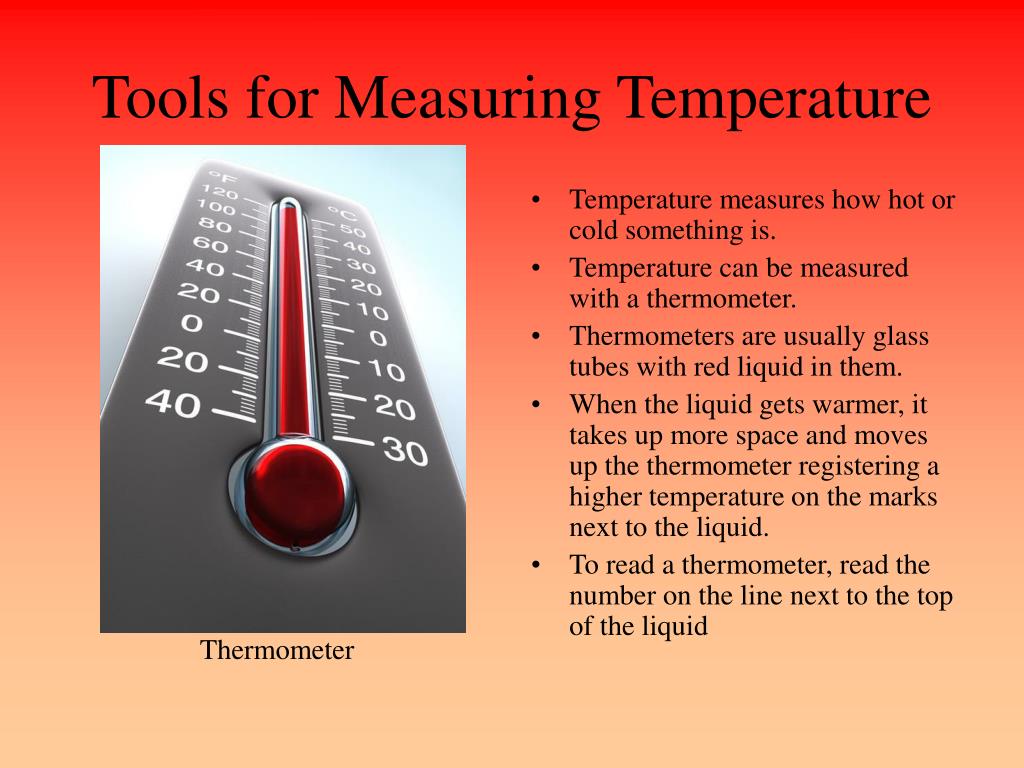
A medical thermometer usually ends at 45°C. At 42°C, irreversible decomposition of proteins in the body begins, at 43°C, denaturation (thermal decay) of proteins in brain neurons, which leads to inhibition of brain functions, coma and death.
But even a temperature above 38°C (it is called febrile) is already quite difficult for the body. Blood pressure rises, heart rate rises, the number of decay products of bacteria in the blood increases, which can cause symptoms of poisoning and disrupt brain function (hence hallucinations).
Consequences of prolonged fever may include fainting, heart and kidney failure, dehydration, digestive and nervous system disorders.
As we found out, the temperature helps to fight the disease. Therefore, doctors usually advise taking antipyretics only when the temperature exceeds 38-38.5 ° C. But it depends on the state of the person himself, on how he tolerates the fever. In this case, an overdose of the drug can cause serious damage to the liver, kidneys, gastrointestinal tract, heart and brain.
If the fever is due to hormonal causes, such as hot flashes during menopause or a thyroid disorder (hyperthyroidism), these medicines will not work. In such cases, cooling treatments such as rubbing with a damp towel or bathing in cool water help.
As far back as the 1574 dictionary of John Whizels, it was noted that “fasting is an excellent remedy for fever.” But if the recommendation to drink more fluids has an obvious explanation (replenish fluid balance and remove the breakdown products of pathogens from the body), then what about the advice to eat less?
On the one hand, in order to maintain a high temperature, the body needs additional energy, which it can get from food. Fasting also creates additional stress. On the other hand, overeating and eating too spicy, unusual, unfamiliar foods can be harmful. The body may misinterpret certain substances as allergens and provoke a reaction.
Such a method exists. For example, in the middle of the 20th century, the German physician von Ardenne began to use it on cancer patients as a means of “last hope”. The fact is that cancer cells die at temperatures close to 42°C. Von Ardenne was able to heat patients up to 41.8°C. True, no more than 17% of them survived, but they were cured.
The fact is that cancer cells die at temperatures close to 42°C. Von Ardenne was able to heat patients up to 41.8°C. True, no more than 17% of them survived, but they were cured.
The “water” method was used for heating. The patient was placed in a special bath and with the help of water-jet devices placed over the patient, and poured over with heated water. Body temperature should have risen to 42-43°C. This procedure lasted about 6 hours under general anesthesia. The head was cooled with a special helmet. Later in the USSR, the idea of heating with microwaves was developed.
Hyperthermia can help treat cancers that are difficult to operate on (eg, brain, mouth, and neck tumors). Heated tissues are more sensitive to ionizing radiation, which increases the effectiveness of radiotherapy. The problem is that it is not yet possible to concentrate the source of thermal radiation exactly at the site of the tumor without affecting other tissues.
Nevertheless, in recent years, the interest in therapeutic hyperthermia among scientists has been growing due to the development of new technologies.

 4 or higher (call your doctor or go to an emergency room immediately)
4 or higher (call your doctor or go to an emergency room immediately)